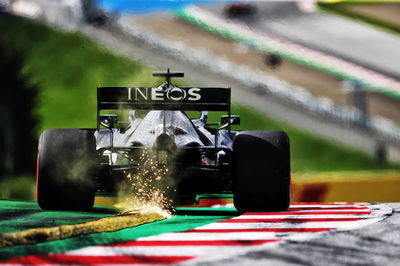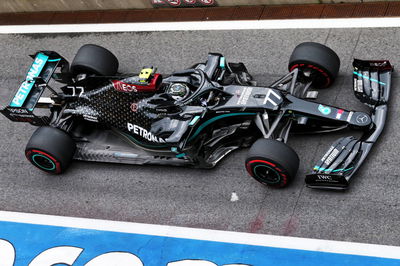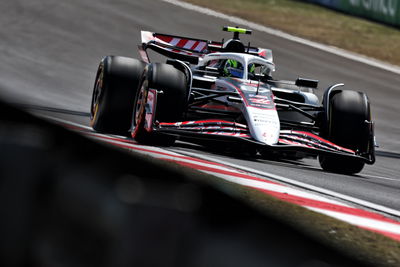Why Red Bull challenged Mercedes F1’s DAS - and why it lost
One of the first major battles of the 2020 Formula 1 season erupted on the opening day of running at the Austrian Grand Prix as Red Bull took on Mercedes directly… and subsequently lost.
But this was not the case of settling an on-track squabble but rather a debate over the regulations and whether a controversial steering system being used by Mercedes was legal or not.
While teams’ discontent over the Ferrari-FIA engine settlement continued to rumble on in the background, DAS took centre stage on Friday.
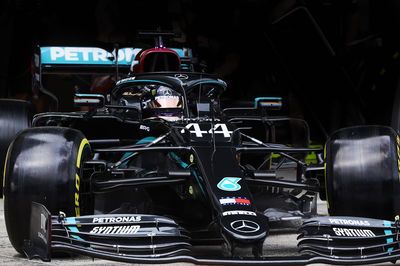
One of the first major battles of the 2020 Formula 1 season erupted on the opening day of running at the Austrian Grand Prix as Red Bull took on Mercedes directly… and subsequently lost.
But this was not the case of settling an on-track squabble but rather a debate over the regulations and whether a controversial steering system being used by Mercedes was legal or not.
While teams’ discontent over the Ferrari-FIA engine settlement continued to rumble on in the background, DAS took centre stage on Friday.
The controversy began when Mercedes debuted the innovative steering solution it christened ‘DAS’ - or Dual-axis Steering - during pre-season testing at Barcelona.
DAS allows drivers Lewis Hamilton and Valtteri Bottas to adjust the toe angle of the car from within the cockpit by using their steering wheel.
In the Mercedes system, the driver can pull on the steering wheel to straighten the front wheels coming onto a straight before pushing back on it to revert to the ‘toe-out’ position upon corner entry.
This has clear benefits for a driver while cornering, giving them added stability and grip. It not only alters the amount of tyre ‘scrub’ on the straights to help improve tyre usage, but it also reduces drag, which in turn increases straight-line speed.
Precisely how Mercedes intends to use the system was the subject of great debate and mystery, with technical director James Allison keen not to shed too much light when speaking about the device prior to the start of the campaign.
“It just introduces an extra dimension, if you will, for during the year," he explained.
“Precisely how or why we’ll use it is something we will keep to ourselves.”
When the season kick-started back into life following months of delays caused by the COVID-19 pandemic, Mercedes confirmed it was using the DAS system on both of its cars as it stormed to consecutive 1-2s across the opening two free practice sessions on a dominant first day of running at the Red Bull Ring.
Mercedes’ rivals had been suspicious about the legality of the device which has already been outlawed by the FIA for 2021. It was understood that Red Bull was planning to protest at the original season-opener in Australia before the Melbourne race was cancelled at the 11th hour.
Red Bull edged closer to doing so after team boss Christian Horner suggested the team would ask for clarification over DAS during FP1 in Austria, before an official protest was lodged shortly after the opening day of on-track running had concluded.
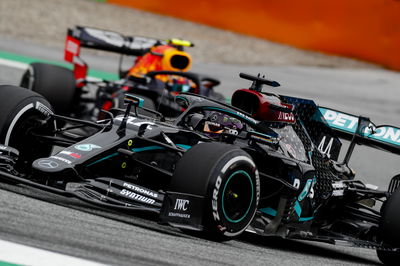
Both parties were summoned to a hearing at 19:10pm to present their respective sides of the argument, with Mercedes’ and Red Bull’s gurus James Allison and Adrian Newey taking opposite views.
Newey and Paul Monaghan, Red Bull’s technical officers, argued that the DAS was a moveable aerodynamic device as well as an adjustment to the suspension while the car was in motion, which if was proven to be the case, would breach the rules on two counts.
Red Bull claimed: “Judging by practice today, it appears to be used on out and slow laps as a means of adjusting tyre temperature, i.e. its primary purpose is not as a steering system but rather a tyre temperature management system.
"By observation of the video footage from FP2, use of DAS was not every lap and isolated to in/out or re‐charge laps thus it was not a system necessary for use in timed laps, rendering the primary purpose to be something other than steering.
“The Technical Regulations do allow multiple steering systems. RBR contends a steering system should have the primary purpose of being able to steer the car. A secondary system that is, on its own, incapable of steering the car is an unnecessary system.”
But Mercedes countered by presenting its case for why DAS is legal, arguing its limitations in impacting the suspension, and that conventional steering systems can often also change the toe as a function of steering angle.
Mercedes added that DAS “is not electronically controlled” and “passes all the geometrical and safety requirements” stipulated in Article 10.4 of the technical regulations.
After considering the statements made by both parties, and following analysis conducted by the FIA’s technical department into the relevant car parts, the Austrian GP stewards threw out the protest, declaring that DAS was legal and indeed part of the steering system - “albeit not a conventional one”.
“The Stewards consider DAS to be a legitimate part of the steering system and hence to satisfy the relevant regulations regarding suspension or aerodynamic influence,” the report concluded.
“In the opinion of the Stewards, the DAS system is physically and functionally a part of the steering system.
“As such, it benefits of the implicit exceptions to certain suspension regulations applicable to steering.”
While this chapter of a fascinating debate appears to have been closed, it remains to be seen whether Red Bull - or any other of Mercedes’ rivals for that matter - will opt to develop its own version of DAS for 2020 before it is banned next season.
There have been suggestions that Red Bull’s motivation for protesting was to get 100 percent clarification from the FIA that DAS was legal, so it could introduce its own version of the system - which it already has primed and ready according to some reports - onto their cars this season.
Either way, the ruling definitively gives Mercedes the green light to continue using the system throughout the rest of the weekend in Austria.
